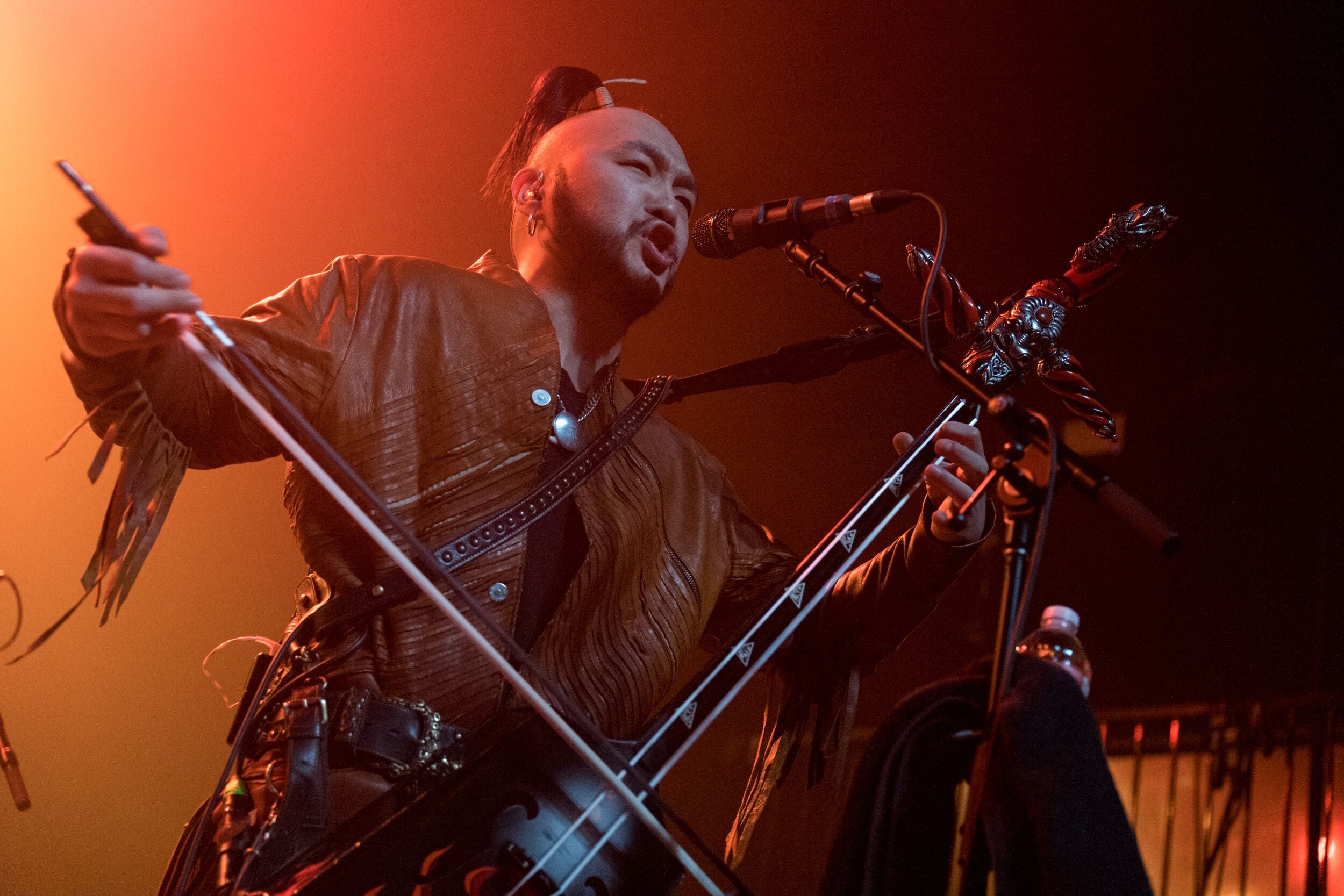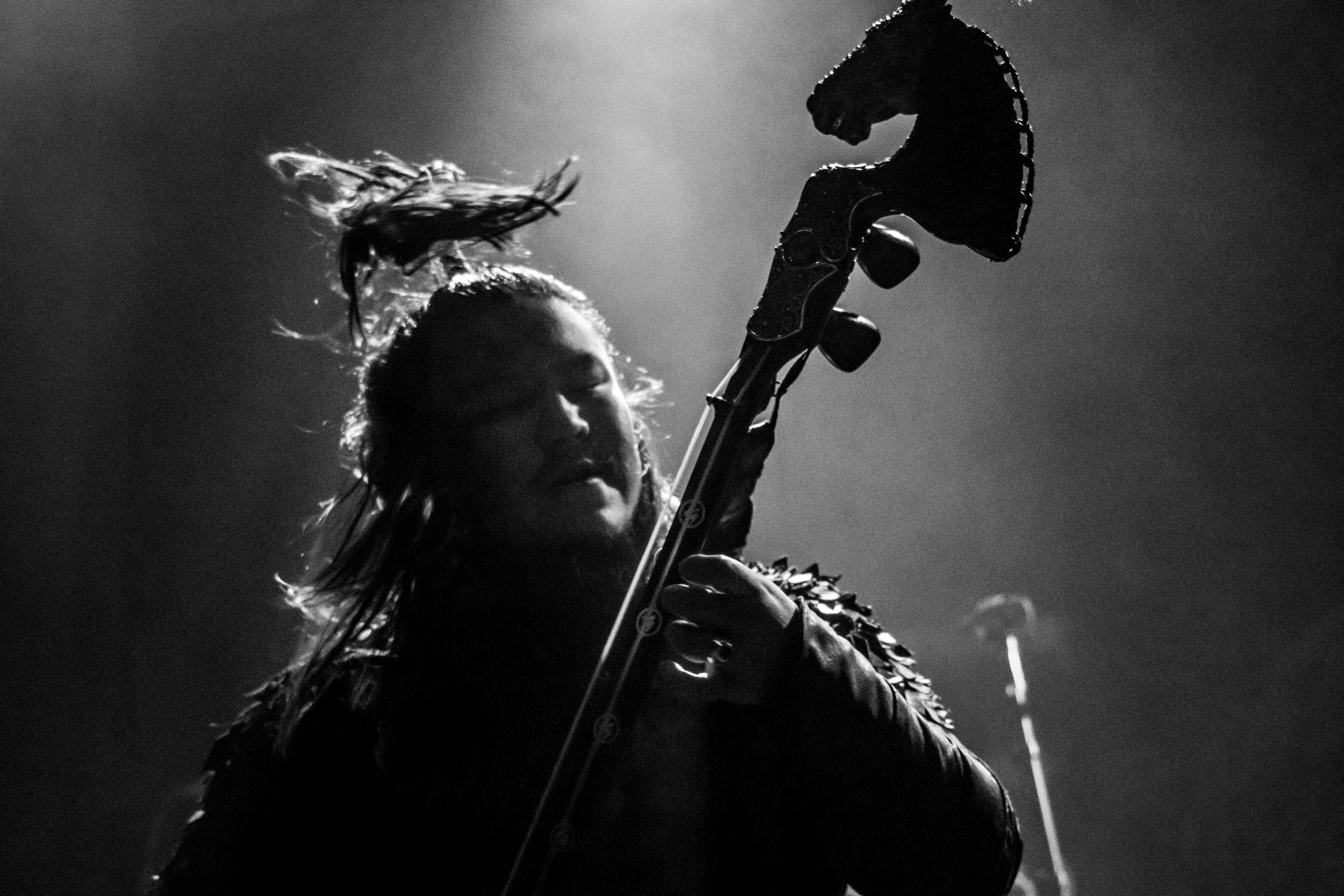The HU review, Electric Ballroom London: Mongolian metal band are like nothing you’ve seen before
Ecstatic reaction from the audience shows the band have a deep-rooted understanding of how people communicate through music

“HU! HU! HU! HU!” The chant thunders around Camden’s Electric Ballroom; hundreds of raised fists – many adorned with skull rings and tattoos – punch the air. Mongolian metal band The HU are in town.
Formed in 2016, the band have become something of a phenomenon in the past year. Their marrying of traditional Mongolian throat singing (“khoomei”) with modern elements of rock, metal and even pop (a few members are massive Coldplay fans) is like nothing the UK has seen before. But if you think their music feels ancient, you wouldn’t be wrong: The HU are building on a sound that’s been around for thousands of years.
Onstage, they’re a formidable presence. Frontman Jaya (Nyamjantsan Galsanjamts) whips his mane of black hair back and forth, urging the crowd on. “Let’s rock!” he yells in heavily accented English (the band’s manager also serves as their translator, but they do just fine on stage). The four core members – Jaya, Gala (Galbadrakh Tsendbaatar), Enkush (Enkhsaikhan Batjargal) and Temka (Temuulen Naranbaatar) – stand in formation, shrouded in thick fog, wielding hand-crafted instruments such as the morin khuur (horse-head fiddle). They’re dressed in what looks like hand-tooled leather, suede with fringing, heavy buckles and – with the exception of Jaya – their hair is tied in traditional topknots.

The set is heavily skewed towards their debut album, The Gereg, which hit number one on the UK’s rock and metal chart last year. They open on “Shoog Shoog”, with its galloping rhythms and twang of the tovshuur (Mongolian lute), as Gala delivers lyrics in a guttural, tremoring growl that befits the wild landscape depicted in the song. Much of The HU’s music is influenced by an intrinsic sense of pride in their heritage, but also the human (“Hu” is the root Mongolian word for “human being”) relationship with nature. “Uchirtai Gurav”, meanwhile, is catchy enough to be a radio hit – clearly inspired by Coldplay, it’s so uplifting that even the surliest, most metal-studded audience members are beaming by the end.
“This one’s for all the women,” Gala bellows, announcing “Song of Women” – a slow, dirge-like hymn over which the fiddle flits and soars, propelling the song into an entrancing climax, as each singer’s voice intertwines with the others. An eagle’s cry heralds the warrior’s chant “Wolf Totem”, their second single, and the fiddle suddenly switches sharply in tone, now recalling the whinny of a horse charging into battle. They’re more reverential on “The Great Chinggis Khaan”, arguably the most controversial of their songs, which hails Genghis Khan as an inventor and founding father, as opposed to the massacring conqueror he is portrayed as outside of Mongolian culture.
The HU may be pegged as a metal band – you can certainly hear traces of Metallica and Rammstein – but there’s a level of technical skill their classical training (at the Mongolian conservatoire in Ulaanbaatar, the capital city) provides that feels relatively unmatched in modern popular music. Fans may not understand their lyrics but it doesn’t matter – their ecstatic reaction comes from a primitive connection with music that The HU have a deep-rooted understanding of. It’s in their blood.
Join our commenting forum
Join thought-provoking conversations, follow other Independent readers and see their replies
Comments